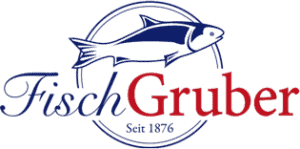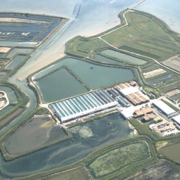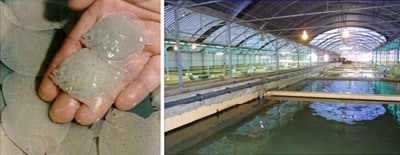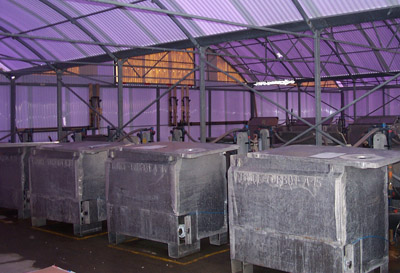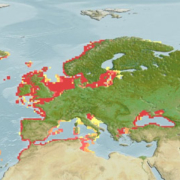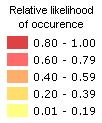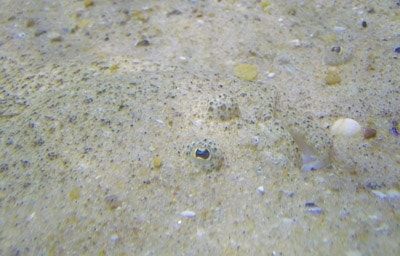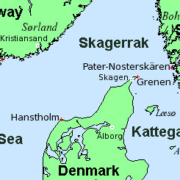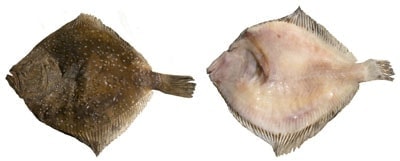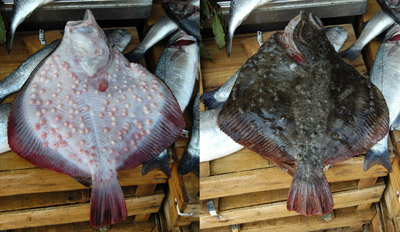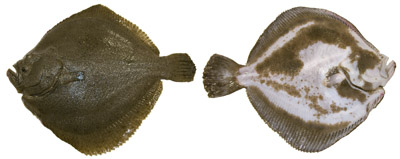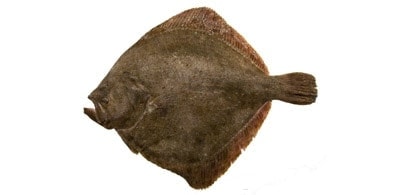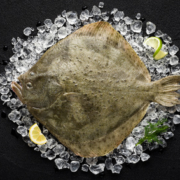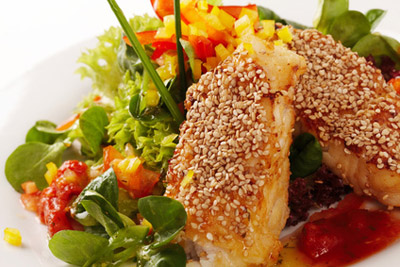- Baby-turbot and breeding bassins
- Transport Containers for living turbot
Our partner in northern France therefore has it’s own laboratory to steadily control water quality and hygiene. Furthermore, the genetic selection for breeders and preventive measures are coordinated.
How to nurse a turbot
Breeding turbots requires skill and experience. Only a few, selected turbots can be breeders. Gilles, who works as agricultural technician for our supplier, explains: “We literally know the breeders personally. They are precious, a kind of long-time capital that needs special care.” The selection is made based on an analysis of growing and resistance against pathogens. The breeders are older than 5 years and can fulfill their duty for a maximum of 5 years. Therefore they are very precious. For a farm producing 250 tons of turbot a year, there are only a few thousand breeders.
After fertilization, only from a quarter of the eggs hatch larvae. Depending on their stage of growth the larvae are fed with living prey and reach after 4 months a weight of 10g. In this stage, they are held in basins with natural, salty ground water. With 60 days the larvae are sorted by size. With 90 days they are vaccinated and transferred to breeding basins with water recycling. With 120 days they are sorted again after size and quality. From the egg to the grown fish it needs 40 months of intensive care and feeding.
The Breeding process
The turbots are fed 2-3 times a day with food, that contains 60% of fish flour and fish oil and 40% of vegetables. The high amount of fish in the food is needed, because turbots are predators.
In one tank there are 2.5 tons of turbot, about 50-70 piece per square meter. Die living conditions are constantly monitored and the water permanently circulates and is recycled. The goal is, to keep the water as still as possible and the temperature at an optimal level of 16-20 degrees. The personnel is highly specialized explains Gilles: “In case of a pump defect we only got 15 minutes, then all fishes are dead. The specialists must react immediately and monitor the fish permanently.” So on a 250-tons farm there are 14 people alone for monitoring and caring for the fish.
Turbots reach their weight for slaughtering starting with 500 gramms. Gilles explains: “The size doesn’t say automatically something about the age! Turbots from 500g-3kg have the same age, they just come from different breeding lines, with different rates of growth.”
The Transport
Due to his slow metabolism turbot is very resistant. Before shipping, the turbots are reach controlled by Hand and brought into smaller basins. There the temperature, the light and the oxygenation are slowly reduced. The turbots have to fast to empty their guts completely. So the metabolism of the turbots is “shut down” and optimal transporting conditions are guaranteed. This process takes 2-6 days. Then the turbots can be transported in special containers and cooled trucks.
The “Label Rouge” Certificate
To guarantee the maximum quality of our living turbots, we only sell “Label Rouge” certified products. The “Label Rouge” guarantees on all levels – food production, breeding and transport – highest standards that are controlled regularly. So the optimal water- and environmental conditions are ensured. The certificate also ensures, that no traces of land animals are contained in the food. Last but not least it provides traceability for every single fish from the egg to sale. To keep the quality on highest level the parameters are constantly controlled and documented and the “Label Rouge” Society also does regular tastings on the final product.
Living turbot is a very complex and sophisticated product. Fisch-Gruber always struggles to provide you with the best Quality!
© Fisch-Gruber, 2009 – Your expert for fresh turbot in Vienna
